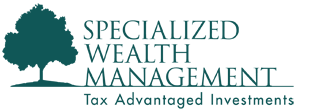Christopher Miller, MBA | Specialized Wealth Management
Originally Appeared in Apartment Management Magazine
Another Blow to California’s Economy
Property owners here in California are familiar with Proposition 13. This landmark 1978 voter-approved-initiative limited property tax increases in the state to 2% annually. When a property is sold, the new owner’s annual tax is 1% (in practice, it is around 1.2%) of the sales price and is still subject to that 2% annual cap on increases.
This tax reform was necessary to keep homeowners in their homes. Prior to Proposition 13, the average property tax in Los Angeles County was 3.1% of value. (Fiscal Year 1977-1978) Between 1955 and 1977; property tax levies in the state increased at an average of 10.22% annually – much higher than inflation. In fact – that sounds more like the rise of college tuition! As some homeowners were seeing annual increases of 50%-100%, financial pressures were immense – especially for folks like retirees on fixed incomes. How would you like to be paying 3.1% annually on your house based on its current value?
On November’s ballot, California plans to feature an amendment to the state constitution that will modify Proposition 13 – called the California Tax on Commercial and Industrial Properties for Education and Local Government Funding Initiative. It’s more commonly known as a “Split-Roll” tax scheme. This will allow the state to “mark to market” the values of commercial properties every year and raise taxes accordingly.
I have lost track of all the tax increases from over the years that were supposed to put our schools on easy street. (I seem to remember the lottery was going to do that.) It also seems like California spends no time analyzing the economic effects of any new tax policies. Remember when they spent tax dollars to give rebates to electric car purchasers, then whined about all the gas tax dollars that were lost from reduced sales? This month, we will try to help California by looking at the potential economic effects of this poorly conceived constitutional amendment.
How Commercial Leases Work
Although this bill’s intent seems to be soaking those “evil and greedy” landlords – is that really what will happen? To find out who would actually pay for this, let’s look at how commercial leases work:
Let’s look at the three main types of commercial leases and how they relate to property tax payments. The first type is a gross lease. Under a gross lease, the landlord pays all expenses. (property taxes, insurance, electricity, etc.) This form of lease is mostly seen in office buildings and self-storage properties.
Our next lease is called a modified gross lease. During my years in property acquisitions, I read hundreds of retail leases that were “modified gross.” Technically, a modified gross lease is any lease that is not absolute gross – it reads “landlord pays all expenses except…” The most common form of this lease that I saw stated that the landlord will pay all expenses that existed when the lease was signed. The tenant would pay any expenses above that amount; called a base stop. If the tenant signed the lease in 2015 and his proportional share of expenses was $10,000 in 2015; he’ll pay nothing in 2015. If those expenses rise 10% in 2016 to total $11,000; the landlord will pay $10,000 and the tenant pays $1,000.
The third lease category is a Net lease. Such leases can be “double net” (landlord pays very few expenses) or “triple net” – where the landlord pays absolutely no expenses at all. Any bills (even insurance and property taxes) under such a lease will go directly to the tenant.
Instant Rent Increase For Most Tenants
Any increase in property taxes will therefore be passed through directly to most tenants. Walgreens and most fast food restaurants, (even franchisee-owned ones), are NNN leased properties – so the increase will go directly to them. So, too, will the increase for the tenants under modified gross, base-stop, leases such as grocery stores and the smaller stores in your local malls. Landlords unlucky enough to have gross leases will see their expenses increase dramatically.
Results Of Such An Increase
Just like landlords, tenants don’t have a magic “money tree” that they pay these bills from. They have two choices: A.) Close down their business or B.) Find an increased source of revenue to cover these new expenses. Any reasonable tenant will try solution B first, and default to solution A if they aren’t successful. This increased source of revenue is you: the consumer.
You have probably noticed how restaurants responded to financial pressures caused by the minimum wage increase: There are less people working in just about every restaurant you visit compared with several years ago. While California is raising restaurants’ labor costs, they then had to deal with COVID – related closures, operating restrictions and a likely decline in business due to a recession. On top of all this, California is seeking to raise their expenses further. The result of all this will likely be 1. More restaurants and retail stores closing – on top of the ones that COVID already closed. 2. The price of everything you buy in a store or restaurant must increase to pay these added expenses.
Some Real Life Examples
To see the effect that this tax could have on the stores you shop at, let’s look at some real-life examples. In the eastern Los Angeles suburb of La Mirada, there is a single-tenant Rite-Aid at the corner of Imperial Highway and Santa Gertrudes. This property was assessed at $1,131,180 in (It’s amazing how far $1 million used to go.) California raised the building’s taxable value by the allowed 2% ever year since, and it is now assessed at $2,833,605. If the tenant (remember – this expense gets passed through to them) is paying 1.2% of that value, that equals $22,003 annually.
Just 8 ½ miles to the west, there is a single tenant Rite Aid of about the same size that is for sale: for $10,120,000. 3 If this property sells for that amount, and if this voter initiative passes, Los Angeles could re-assess that La Mirada property at $10,120,000 as well. Rite Aid’s new property taxes would be 1.2% of that annually, or $121,440 – an increase of nearly $100,000 annually. That will probably pay for close to two employees.
If your favorite local fast food drive through saw an equivalent 551% increase in their property tax bill: from $8,000 annually to $44,000 per year; would they be able to stay in business? How many small businesses can afford an extra $3,000 / mo. of expenses?
California (And The County Assessors) Are Looking At What They May Gain – But What Could They Lose?
A basic law of economics is that if something costs more, people will buy less of it. If the government could figure out how to tax oxygen, (and I’m sure there’s a committee looking into it), people would breathe less. As property taxes rise, prices must rise too to compensate. As a result, consumers will buy less products – so revenue still decreases. As sales decline, jobs are lost and that means less income and payroll taxes going to the government. Our elected officials need funds to pay all the new bills they generated during good times, so they raise taxes again, and the cycle continues. The economy is already under stress from our current pandemic crisis – it’s hard to believe that higher property taxes to discourage building and opening new businesses would be a good idea. My office number is (877) 313-1868.

